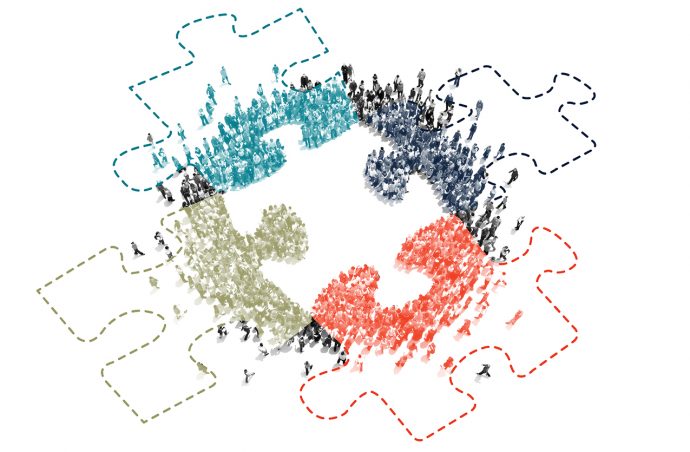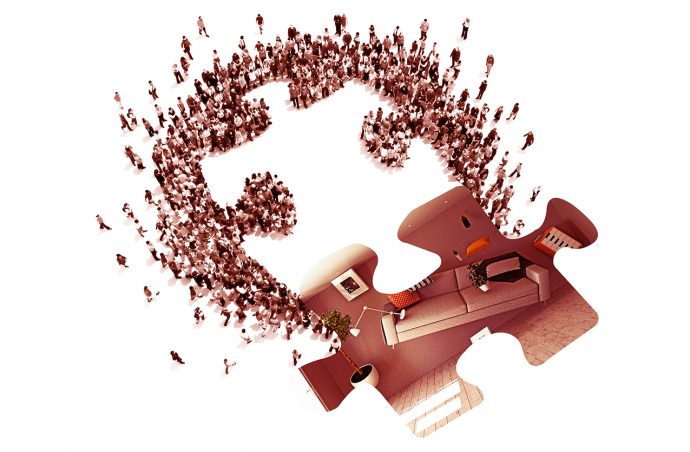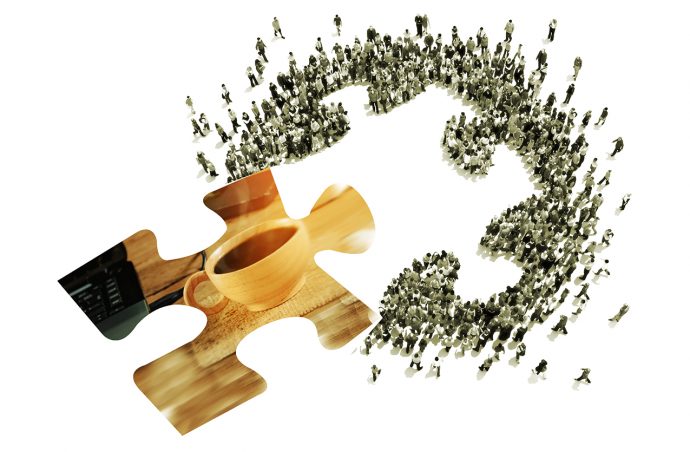In an effort to support workplace wellness, we must encourage people to express their non-work selves to create people-centric workplaces.

How often do you find yourself thinking about non-work topics when you’re on the clock? It’s likely that activities after-hours, family commitments, news events, or other parts of life make regular appearances in office conversations, and that’s more than OK. We are social beings, and our job-related skills are only a piece of what we bring to our careers.
Unfortunately, the organizations and spaces we operate in may not always reflect this as well as we’d like. This can stand in the way of success in the knowledge economy. Complex collaborative work rewards fuller engagement, which may partially explain why some firms are ditching the conventional resume in favor of methods that help them find out more about prospective hires.
To put it another way; if a company’s view of a worker is that they’re just their job, that’s all they’re likely to get. On the other hand, organizations that recognize their people as whole human beings enable them to bring more to the table.

Beanie Babies and baby photos
Encouraging people to express their non-work selves in their work space recognizes that they are more than just the work they do. Traditionally, this expression might’ve included placing photos of family members on their desks, displaying some symbol of a hobby, or even bringing in their favorite collectibles. While these sorts of items likely wouldn’t raise eyebrows in most workplaces, they are also just scratching the surface of our complex identities.
There is still much room for growth in the way our workplaces embrace other facets of ourselves. A survey by Deloitte found that a majority of respondents engaged in some kind of “covering” at work, meaning that they deliberately adjusted their behavior to compensate for expectations related to their identity or group affiliation. Though most thought it was detrimental to their sense of self, they also thought that failing to do so might impact their professional advancement.
If we hope to support wellness and full engagement in our workplaces, we have more work to do here. So by all means, bring on the baby photos, but don’t stop there.
Possibly even real infants
In April of 2018, Senator Tammy Duckworth became the first US Senator to give birth while in office. A few days later, her colleagues changed the Senate rules to allow her infant to accompany her onto the floor – complete with a duckling onesie – so that Duckworth could cast an important vote.
Not an organization typically known for its blistering pace of innovation, the Senate has now instituted a family-friendly policy that some businesses have yet to adopt. It’s worth taking this opportunity to reflect on the family and leave policies at our own workplaces. The Deloitte survey suggests that many workers don’t feel comfortable requesting accommodations for their identities in the same bold way that Duckworth did. Creating a culture in which people feel safe pushing those boundaries is key.
Flexible work arrangements are driving a lot of positive change in our workplaces, but may sometimes introduce new challenges. Teams that are not colocated miss out on some of the social interactions that deepen trust and strengthen communication. Water cooler chats, coffee runs, and other spontaneous interactions play a useful role in building a cohesive team. Without a purposeful effort to replace events like office birthday parties or celebrating achievements together, it may become harder to develop a shared workplace culture.

Spaces that welcome our multiple selves
People, and the work they do, exist in spaces. Those spaces shape their activities and interactions with each other. The nature of the spaces we provide can affect not only the kinds of behavior we encourage, but even the ability of some of our colleagues to function effectively in the environment.
For instance, if an employee takes insulin shots to manage diabetes, and the workplace does not provide a place for them (other than the restroom) to do this comfortably and discreetly, they may be inhibited at work.
Designating a room for nursing can make it easier for working mothers to do their jobs. The office kitchen could be stocked with kombucha, tea, or other choices that help promote wellness. Non-gendered restrooms are another good way to recognize and welcome a diversity of identities, while also offering efficiency gains to the business.
Other efforts can encourage wellness and wholeness, but may first need an initial investment. Workplace yoga can both relieve stress and improve cognitive performance, but requires access to a suitable space.

Amenities that help organizations to come together
The trend toward resimercial design reflects a desire for a more comfortable and communal way of working. While it would probably be a stretch to say that a particular piece of furniture is the remedy for all the challenges a workplace may face, the design and amenities of the office can directly affect how and when the team works together.
Each year, NeoCon offers attendees new ideas for creating spaces that support our best work. Two years ago, there was a focus on enabling people to hack their spaces to meet their individual needs. Last year, presenters zoomed out and drew attention to the role design choices can play in creating community. PLASTARC shared a white paper about its work with West Elm, citing some important reasons to invest in work surfaces that are simple, flexible, and familiar:
…at our kitchen tables, we feel the presence of an enduring place, one we can rely on to support whatever work we’re doing, be it individual or group-based….Simple furnishings that are easy to transform radiate a sense of residential familiarity that can do wonders for engendering professional cooperation.
Varis Niwatsakul, a design analyst for PLASTARC, thinks this year’s conference will encourage organizations to take an even wider view; “We saw a lot of growth and development in workplace products and technology over the last year, and it’s time for those trends trickle up to an ecosystem level. How might the furnishings of a workplace be activated to create collisions of ideas and perspectives? How might your company’s resimercial break area foster interaction and encourage design thinking?”

Technology that enables comfort and autonomy
People in today’s workplaces are coming to expect a greater degree of customization, including the ability to adapt their surroundings to the way they work best, and there’s evidence that people perform better when they control their space. Tools that enable comfort and a sense of ownership in our shared spaces are springing up to meet these needs.
Smart office technology allows customization on a per-user basis. For example, Comfy lets people book a conference room with their phone and easily adjust the room lighting and temperature. Beyond immediate effects of making the office a more pleasant place to be, there is evidence that the kind of light people are exposed to can impact their sleep. Devices can also remind people to get up and move around from time to time, which has been shown to improve cognitive function and mood.
The leadership role
Whatever policies, amenities, or other initiatives are put in place, it’s important for leaders to join in. People tend to follow the examples they see at the top of an organization. The more business leaders show and celebrate their whole selves at work, the more likely their teams are to follow suit.



Just came across an interesting related read—more evidence that bringing your whole self to work matters:
“Thinking of your work self as separate from your home self could lead to unethical decisions”
https://qz.com/work/1436230/thinking-of-your-work-self-as-separate-from-your-home-self-could-lead-to-unethical-decisions/